Hydrangeas have earned a special place in the hearts of gardeners for their many attractive qualities. These hardy shrubs can thrive in a wide range of soil types and climates, making them a great choice for nearly any garden. With their showy, oversized blooms in shades of pink, blue, purple, and white, hydrangeas add an impressive display of color and visual interest to any outdoor space. Plus, they require relatively low maintenance, with only occasional pruning and watering needed.
The versatility of hydrangeas is also a major draw, as they can be used in the garden in many ways; they're beautiful in a border planting, make an elegant hedge, and are a stand-out container plant.
Get to know these blooming beauties a bit better with 10 fun facts below. Shop our entire selection here, learn more about which hydrangea is right for your garden here, and get the full hydrangea care guide here to grow them confidently for years to come.
1. The Toughest Hydrangeas are "Tetraploids"
Featuring strong, sturdy stems, prolific and long-lasting flowers, and a compact growth habit, the Seaside Serenade® Newport, Fire Island, Hamptons, Cape Lookout, Hatteras, and Martha's Vineyard hydrangeas are all what breeders call "tetraploids".
What is a tetraploid plant?
A tetraploid plant is a plant with four sets of chromosomes in its cells, which is twice the number of chromosomes found in a diploid plant. This genetic condition can lead to larger and more robust plants with unique characteristics.
Tetraploid hydrangeas have a shorter distance between the leaf nodes, keeping the plant compact. It also makes the stems sturdier and stronger. The stems, leaves, and flowers are also thicker and waxier.
What are the benefits of a tetraploid plant?
The thicker, waxier stems and leaves make the plant sturdier and stronger and allow the blooms to last up to 3 months on the plant. The sturdy stems and leaves stand up to extreme weather and hold up as a cut flower. Tetraploids enjoy extended beauty as a cut flower in a vase, too.
Bonus non-hydrangea tetraploid fact: Titan Skye™ is a tetraploid daylily!
(Above) The compact and colorful Seaside Serenade® Newport Hydrangea is perfect as a statement piece in a large container.
(Above) Seaside Serenade® Newport, Hamptons, and Fire Island are all tetraploid hydrangeas.
2. They Have a Storied History
They grow just about everywhere! Native to southern and eastern Asia (from Japan to China, the Himalayas, and Indonesia) and North and South America, Hydrangeas were first discovered growing wild in marshes. The mophead Hydrangea was hidden in the secret gardens of Japan for hundreds of years before it was discovered in 1776 by Swedish botanist Carl Peter Thunberg and introduced to Europe, where they quickly became popular among gardeners and plant enthusiasts.
It wasn't until the 20th century that hydrangeas gained widespread popularity in the United States, where they are now a favorite garden staple across the country.
(Above) Seaside Serenade® Cape May Hydrangea is a compact, re-blooming, and durable modern hydrangea.
3. Six Different Hydrangea Species are Most Commonly Grown in American Gardens
While answers about the number of species of the genus Hydrangea vary somewhere between 25 and 100, one thing’s clear: In North America, we love six species in particular. Below is a quick outline of the most beloved and most commonly grown. Not sure which hydrangea type is best for you? We go into detail on your choices and help you choose the right hydrangea for your garden here.
Bigleaf
Hydrangea macrophylla
- One of the most popular hydrangea species in North America and is commonly used in landscapes and as cut flowers. Known for its large, round flower clusters that bloom in shades of blue, pink, and purple.
- Hardy to zone 5.
- Bloom in summer.
- Reblooming varieties like Seaside Serenade® bloom on old and new wood.
- Older varieties bloom on old wood; prune after flowering; protect in winter.
- Mophead hydrangea favorite: Blue Enchantress®
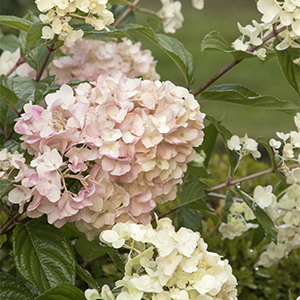
Panicle
Hydrangea paniculata
- Features long, cone-shaped flower clusters that bloom in shades of white, pink, and red. This hardy and easy-to-grow hydrangea species can thrive in a variety of soil types and climates and can be grown in full sun.
- Hardy to zone 3.
- Reliable late bloomers that bloom mid-to-late summer and into fall.
- Bloom on new wood: prune in late winter/early spring.
- Panicle hydrangea favorite: Strawberry Shake™

Smooth
Hydrangea arborescens
- Named for its smooth, light-green leaves and large, round flower clusters that bloom in shades of white, pink, and green. It is a low-maintenance hydrangea species that is well-suited for shady areas.
- Hardy to zone 3.
- Blooms in summer.
- Bloom on new wood: prune in late winter/early spring.
- Smooth hydrangea favorite: Seaside Serenade® Bar Harbor

Climbing
Hydrangea petiolaris
- Vigorous climbers that can grow up to 80' tall. Well-suited for growing on walls, fences, and trellises.
- Hardy to zone 5.
- Bloom in summer
- Bloom on old wood; prune in summer after flowering.
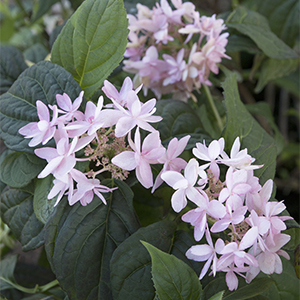
Mountain
Hydrangea serrata
- It is actually still a debate whether Hydrangea serrata is a separate species or a subspecies of Hydrangea macrophylla. Either way, it is more cold-tolerant than Hydrangea macrophylla and can grow at higher elevations.
- Small, delicate flowers bloom in shades of blue, pink, and purple.
- Hardy to zone 5.
- Bloom in summer.
- Bloom on old wood: prune after flowering.
- Hydrangea macrophylla subsp. serrata favorite: Seaside Serenade® Cape May

Oakleaf
Hydrangea quercifolia
- Named for its lobed leaves that resemble oak leaves. The large, cone-shaped flower clusters bloom in shades of white, pink, and purple.
- This slow-growing hydrangea species prefers acidic soil and partial shade.
- Hardy to zone 5.
- Blooms in summer.
- Bloom on old wood: prune after flowering, and protect in winter.
- Oakleaf hydrangea favorite: Snow Queen
4. What's in a Name?
Call them what you will—mophead, French, bigleaf, florist, garden, lacecap, hortensia—they’re all Hydrangea macrophylla, American’s favorite type of hydrangea. Speaking of names, “Hydrangea” stems from two Greek roots, ‘hydro’ meaning water, and ‘angeion’ meaning vessel. Together, the rough translation is “water vessel,” which refers to Hydrangeas’ thirst for water.
(Above) Seaside Serenade® Glacier Bay Hydrangea is a Hydrangea macrophylla that has created quite the buzz with its crisp-white lacecap blooms and dark black stems.
5. Some are Hardy to -40°F
While the majority of Hydrangeas do their best work in zones 5–9, there are quite a few that are perfectly happy in zones 3 and 4. There really is a Hydrangea for just about every garden!
In colder climates with harsh winters, it is important to protect hydrangeas from harsh winter weather by providing a layer of mulch around the base of the plant, wrapping the plant in burlap or other protective covering, and avoiding pruning in the fall. By choosing a species and cultivar that is well-suited to your climate and taking steps to protect the plant during the winter, you can enjoy the beauty of hydrangeas year after year.
Learn more about getting your hydrangeas ready for winter here.
(Above) Seaside Serenade® Bar Harbor Hydrangea is hardy down to zone 3.
6. They Range in Height from 18" to 80' Tall
Compact hydrangeas, such as Pink Elf® French Hydrangea, which only reaches 18" tall, and the 3' tall Seaside Serenade® hydrangeas are perfect for small gardens, borders, and containers. Medium-to-large hydrangeas like the 5' tall Strawberry Shake™ Hydrangea or Limelight Hardy Hydrangea, which can reach up to 8' tall and wide, can be used as a specimen plant or as a hedge. Then you have climbing hydrangea, which can reach up to 80' in height or length.
This huge variety of sizes means that from pots to plots to walls, there’s a hydrangea for every space.
(Above) Climbing Hydrangeas can quickly reach up to 80' tall with support, and clings to surfaces like walls by aerial rootlets.
(Above) The small but bold Pink Elf® French Hydrangea is a dwarf plant that only grows up to 18" tall and 24" wide, making it perfect for containers, small gardens, and borders.
7. Some Hydrangeas Change Colors, Some Don't
Most hydrangea lovers know that some hydrangeas have flowers that will turn blue in acidic soil and purple to pink in neutral to alkaline soil. However, no matter how much you try to change the soil pH, white flowering varieties will always stay white. Additionally, certain hydrangea cultivars like Fire Island, Cape Hatteras, and Martha's Vineyard in the Seaside Serenade® collection maintain their flower color regardless of the soil pH.
Get more information about changing hydrangea flower color in the complete hydrangea care guide here.
(Above) Seaside Serenade® Cape Hatteras Hydrangea will retain its long-lasting ruby red color regardless of soil pH.
(Above) While Seaside Serenade® Cape Lookout Hydrangea flowers will change colors as they age (from pale green to pure white to blushed pink), the flowers will not change color based on soil pH.
8. Pruning is Not as Complicated as You May Think
Here are the basics of hydrangea pruning:
- Many newer, more compact varieties like Seaside Serenade® rarely need to be pruned.
- Prune summer bloomers in late winter.
- Prune spring bloomers right after flowering.
- Determine the type of Hydrangea (see above) before pruning to get the timing right.
- Stray or broken branches can be trimmed back at any time.
Need more details about pruning hydrangeas? Find everything you need to know here.
(Above) Seaside Serenade® Cape Lookout, Marthas Vineyard, and Cape May Hydrangeas have a compact growth habit that rarely needs pruning.
9. From Sun to Shade, There's a Hydrangea for That
There are Hydrangeas for full sun (try panicle hydrangeas) and others for part-day sun (just about any hydrangea will thrive), but few bloom with abandon in shady settings like the filtered sun under a tree canopy. Most Seaside Serenade® Hydrangeas will deliver flower power in these shady settings. So does the below-pictured Plum Passion® Improved (Hydrangea aspera), with its dramatic purple leaves and bicolor lacecap flowers. Hewing back to Hydrangea’s history of random discovery, this beauty was found in China by plant explorer Dan Hinkley.
(Above) Plum Passion® Improved Hydrangea thrives in a shady garden with a large hosta.
10. They're a Floral Design Favorite
The versatility and beauty of hydrangeas make them a popular choice for floral designers and a beloved flower in the world of floral design. Hydrangeas are a popular choice for floral designers because of their large, lush blooms and their ability to add color, texture, and volume to arrangements. Seaside Serenade® Hydrangeas in particular are the best hydrangeas for cut flower arrangements thanks to their strong, sturdy stems and long-lasting flowers. Thanks to the vast variety of colors, hydrangea types can be mixed and matched to create a range of beautiful color combinations.
It doesn't stop at fresh flowers! Hydrangeas are also a favorite for use in dried floral arrangements, where their blooms can be preserved and used long after they have dried. Dried hydrangea blooms can be used in wreaths, garlands, and other decorative arrangements, adding a touch of natural beauty to any space.
(Above) Vibrant purples of Seaside Serenade® Newport Hydrangea in a cut flower arrangement.
(Above) Blue Seaside Serenade® Cape Cod Hydrangea cut flowers in a vase.
3 Favorite Mophead Hydrangeas
Seaside Serenade®
Fire Island Hydrangea
A parade of color with long-lasting, bi-color blooms that are white, edged in rich rosy red, and mature to deep pink. Partial shade to filtered sun. Up to 4′ tall, 3′ wide. Zones 4-9.
Seaside Serenade®
Cape Cod Hydrangea
A hardy, repeat blooming machine with big, mophead flowers, extra-dark green leaves, and a neat, mounded form. Partial shade to partial sun. Up to 4′ tall and wide. Zones 4-9.
Seaside Serenade®
Hamptons Hydrangea
Huge, ball-shaped blooms with thick, intense pink florets on amazingly tough stems. Partial shade to partial sun. Up to 4' tall, 3′ wide. Zones 4-9.
3 Favorite Panicle Hydrangeas
Strawberry Shake™
Hydrangea
A gorgeous panicle hydrangea in a compact form. Flower clusters open white and quickly mature to a soft, rosy pink. Up to 5' tall, 4' wide. Zones 4-8.
Candy Apple™
Hydrangea
Huge clusters of beautiful, creamy-green flowers that age to a pure white. Extra-sturdy stems do not flop. Up to 5' tall and wide. Zones 4-8.
Early Evolution
Hydrangea
Flowers start lime-white in spring before turning pure white, then blush as they age, ending up dark pink in September. Full to filtered sun. Up to 2' tall and wide. Zones 4-9.
Learn Even More About Growing Hydrangeas
- Sign up for the Grow Beautifully Newsletter. You'll get gardening tips, design advice, free digital guides, and live webinar invites. Plus, new, exclusive plant information delivered straight to your inbox twice a month.
- Your Guide to Hydrangea Types: The Right One for Your Garden
- Complete Hydrangea Care Guide
- How to Put Hydrangeas to Bed for Winter
- How and When to Prune Hydrangeas
- Our Top 10 Gardening Tips
- Guide to Pruning Flowering Shrubs
- Check out the "Garden Tips" section of the blog for care guides and garden tips on a wide array of plants.




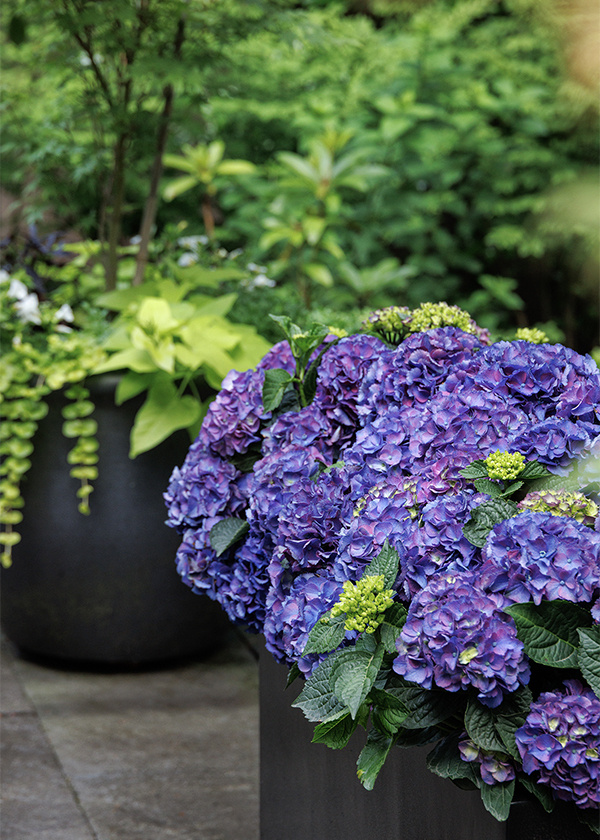
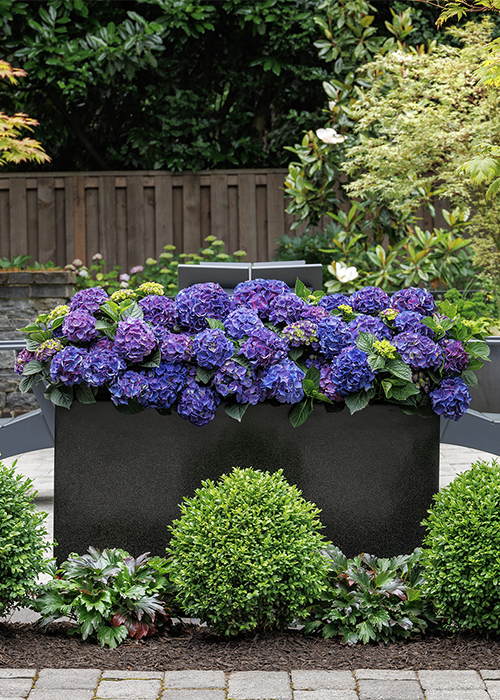
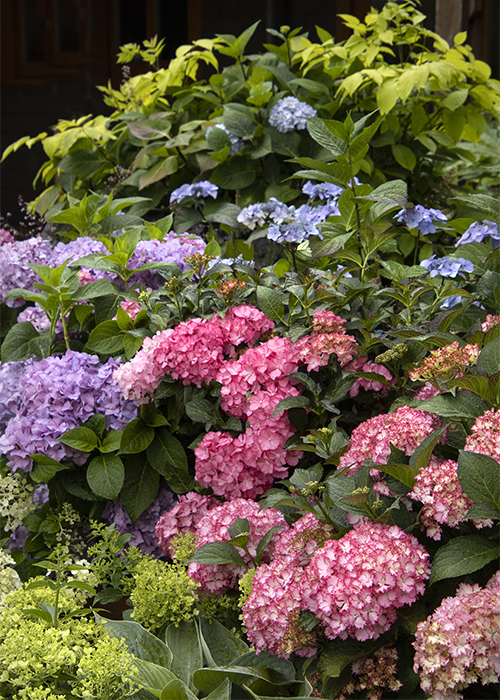
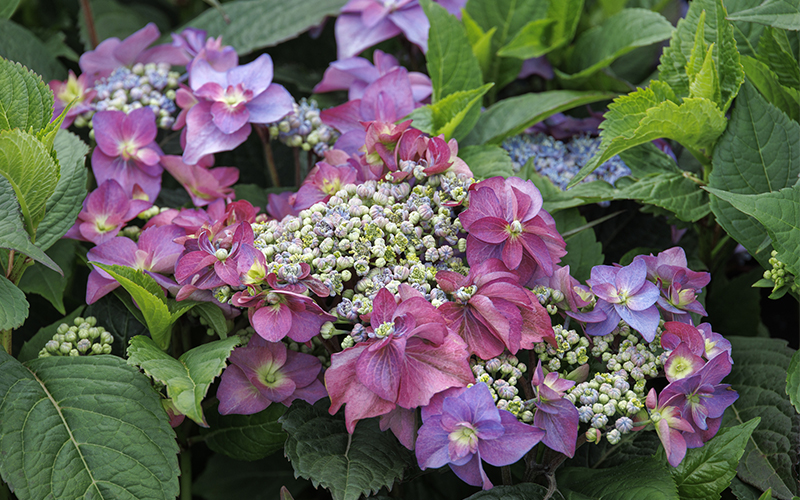
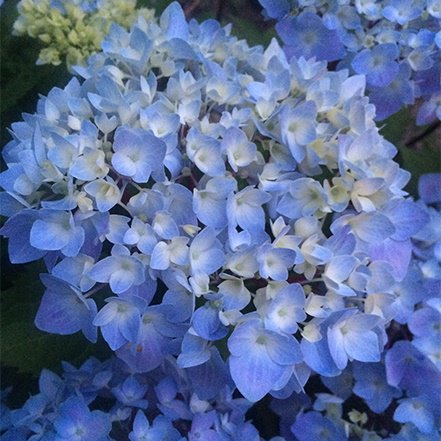
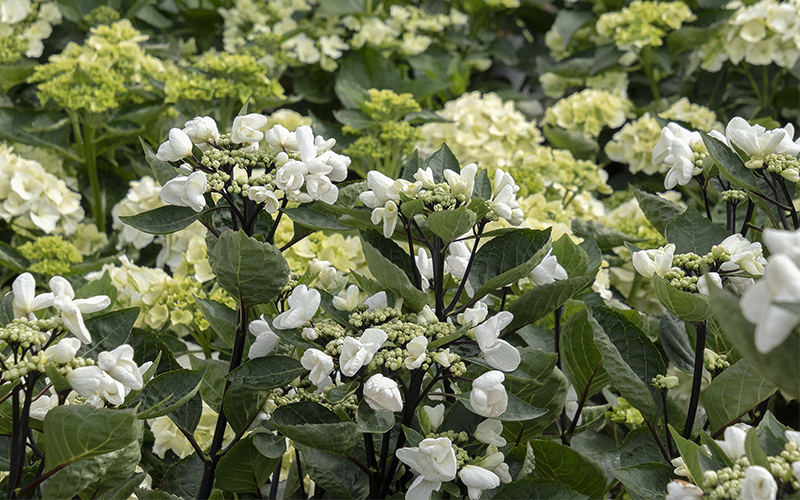
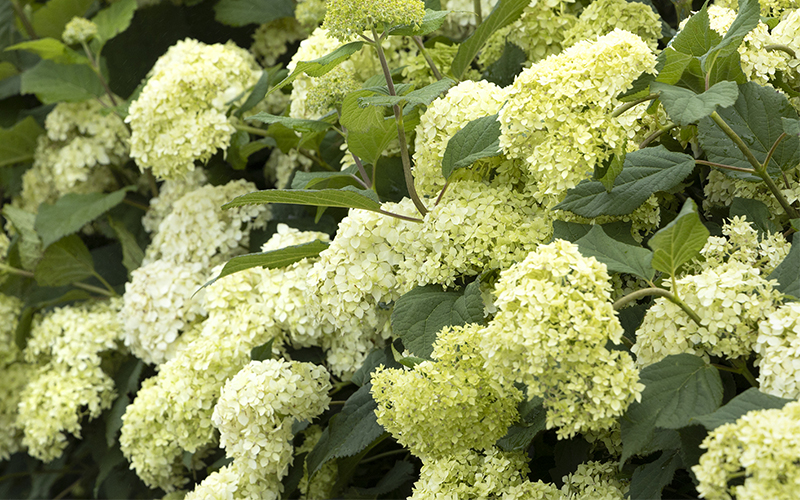
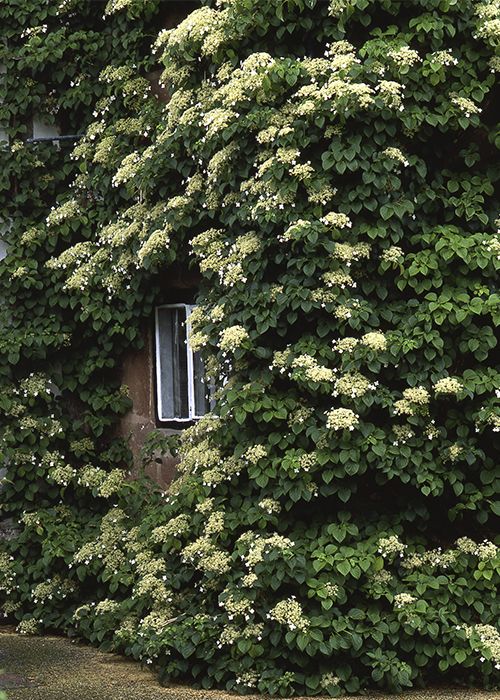
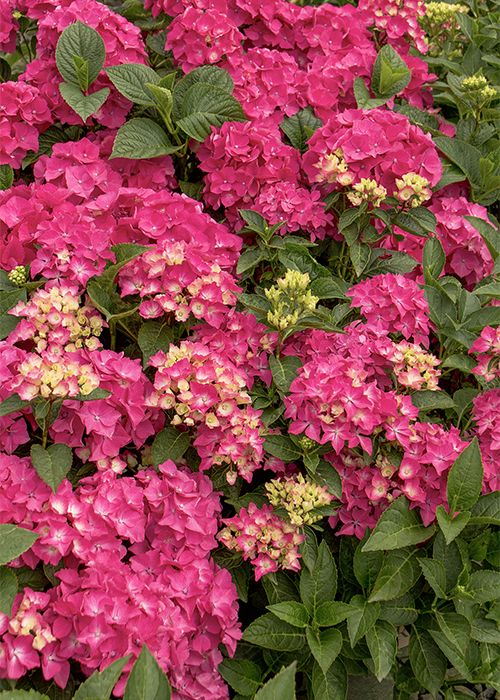
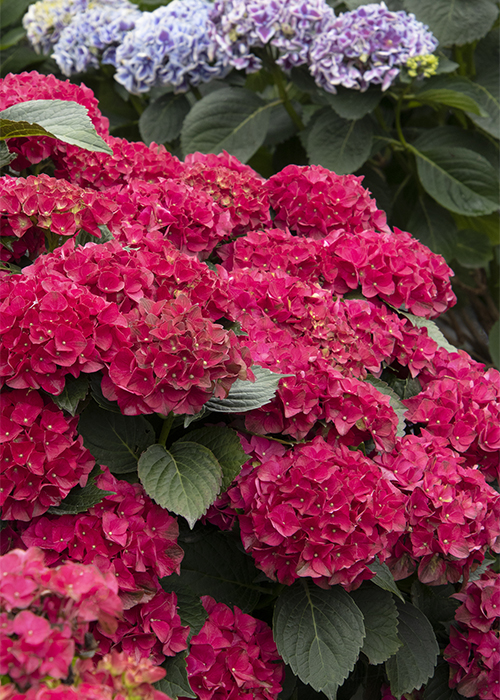
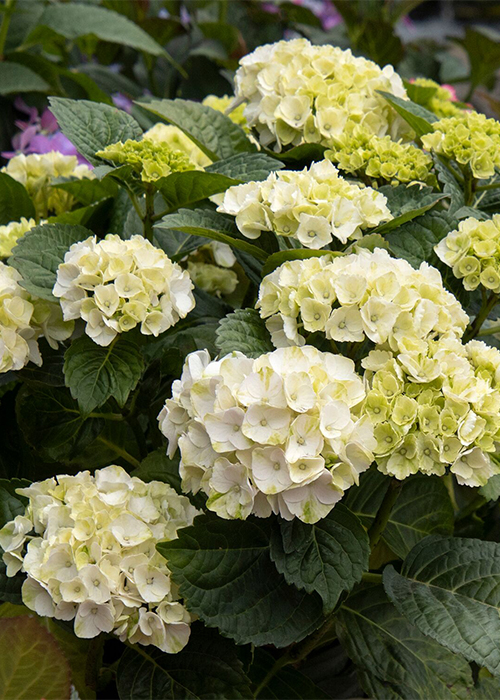
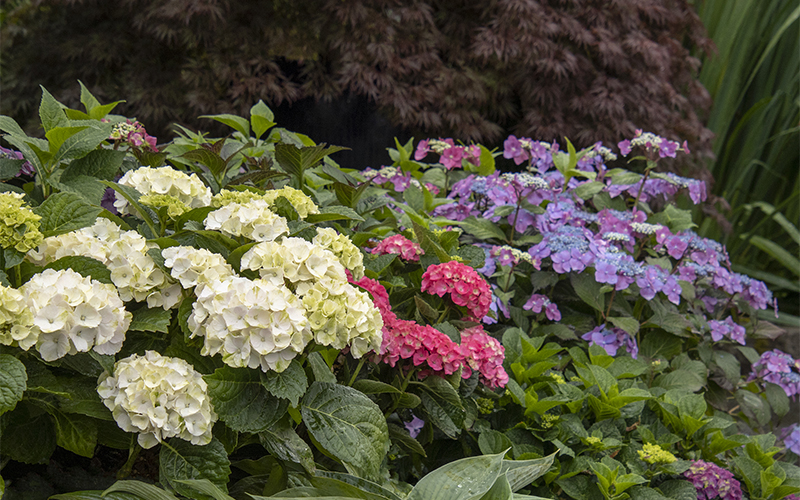
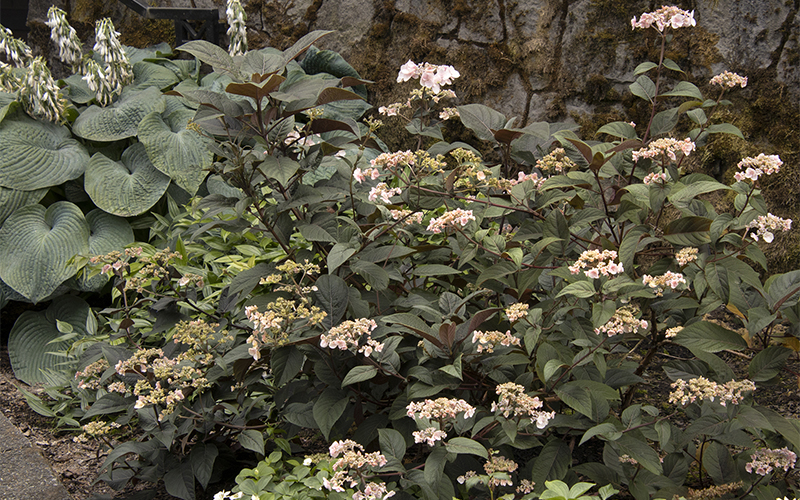
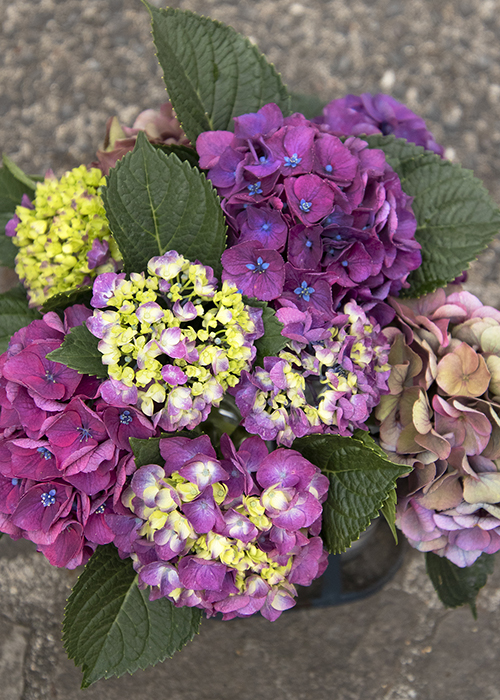
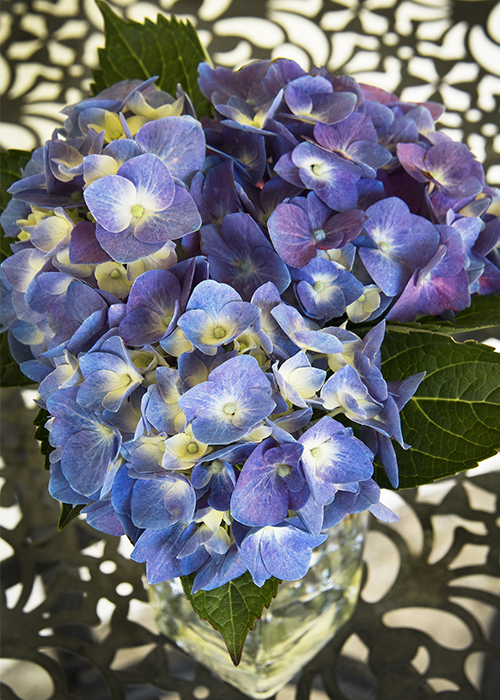
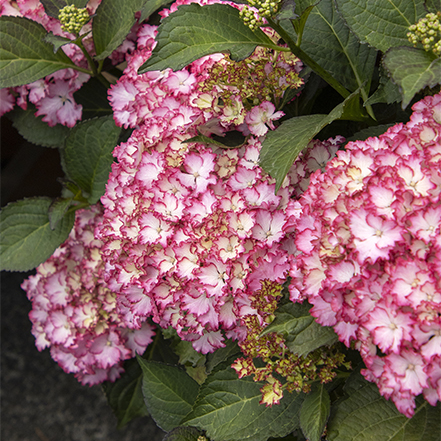
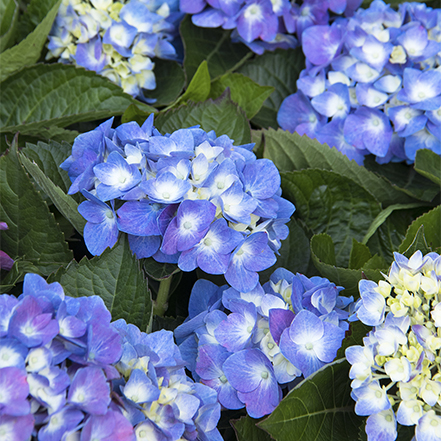
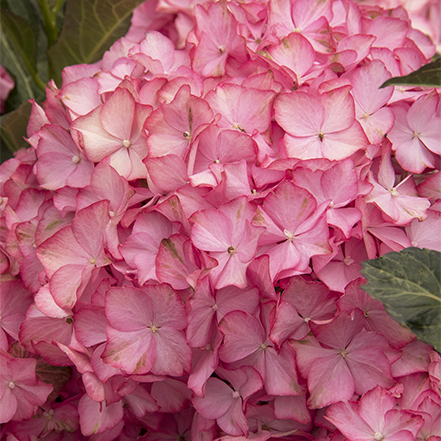
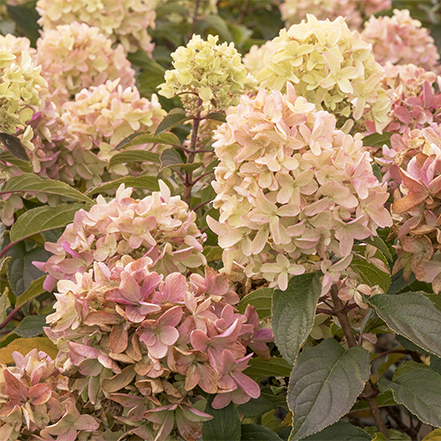
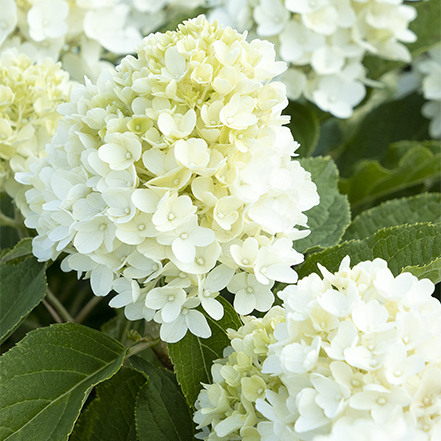
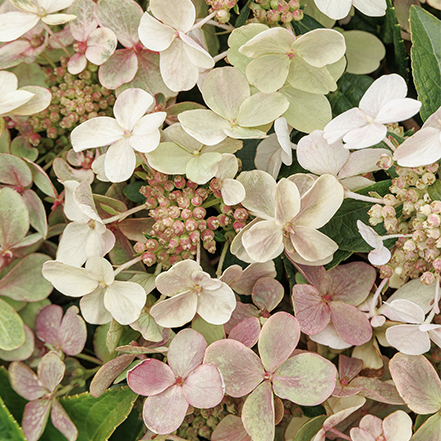
Please login to comment.
Don't have an account?
Sign Up for free